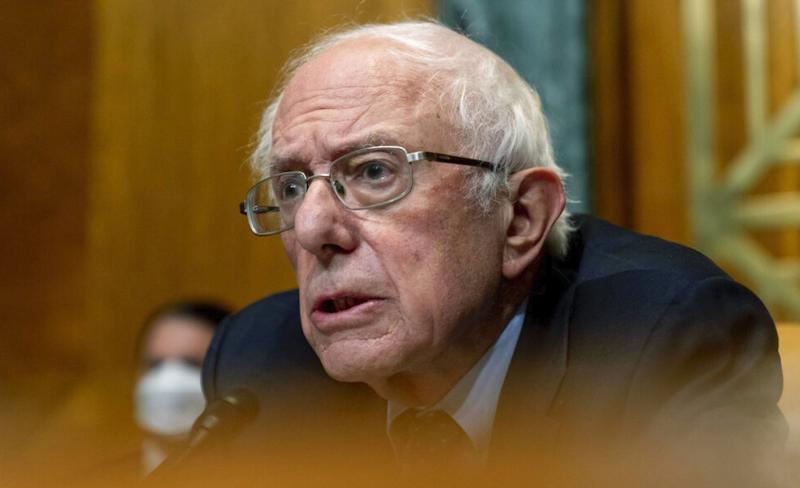Democrats' reconciliation bill denies employees choice in the workplace



On Labor Day, the public celebrates workers' dignity. Ironically, Congress will soon consider legislation denying workers a say in how they communicate with their employers. Sen. Bernie Sanders has committed to including the PRO Act in the reconciliation bill. One of the PRO Act's provisions would eliminate a safeguard that protects workers' agency: the federal ban on secondary boycotts and strikes.
© Provided by Washington Examiner
Federal labor law is premised on giving workers agency, empowering them to decide how to deal with their employers. The law protects workers' rights to speak to their employers collectively through union representatives. It also protects their right not to unionize and instead deal directly with their employer. The fundamental principle of existing federal labor law is the worker decides, and the federal government protects their freedom to choose.
Secondary boycotts and strikes are inherently anti-worker.
Secondary strikes occur when a union strikes to prevent its employer from doing business with a second company the union wants to organize. As a hypothetical, imagine the United Auto Workers has unionized General Motors. In a secondary strike, the UAW would strike GM if it purchased parts from nonunion suppliers or provided vehicles to nonunion dealerships. The strike would last until GM stopped working with those companies or the workers became unionized.
Secondary strikes are incredibly powerful organizing tools. They allow unions to leverage organizing one company into unionizing all firms that do significant businesses with that company. In the above example, the part suppliers and dealership would need to unionize to stay afloat.
But secondary strikes and boycotts are also hugely coercive to workers. Secondary strikes turn workers into pawns on an economic chessboard. These strikes put an economic gun to workers' heads, telling them they must join a particular union or lose their job when their company goes under. Workers can still vote on whether to unionize and which union to join. However, if they do not join the specific union pressuring their company, their firm may go bankrupt, and they may become unemployed. Joining the union thus becomes an offer they can't refuse or a bullet they must bite.
Secondary actions take the choice about unionizing out of workers' hands.
This is precisely why federal law has prohibited them since 1947 when Congress voted overwhelmingly to outlaw secondary strikes and boycotts. Congressional debate featured stories of constituents forced to unionize through secondary actions. Members of Congress supported the right to unionize, but they wanted workers to make that decision.
As Pennsylvania Sen. Ed Martin explained: "I recognize labor's right to strike to obtain relief from grievances, [but] I am opposed to … secondary boycotts. …. I believe the American workingman should be protected in his right to work freely at the job of his choice."
Federal law allows union workers to strike to raise their own pay. But under current law, unions cannot use secondary actions to force other employees to unionize. Unions must persuade those workers to join voluntarily. This system puts workers in the driver's seat.
So why is Sanders trying to eliminate labor protections that have lasted almost 75 years? Because union membership has fallen significantly over the past generation. Unions have not been able to organize enough workers to replace members lost at bankrupt companies. While unions represented a quarter of the workforce in the 1970s, they now represent just 1 in 10 employees.
Unions want the PRO Act to reverse this decline. Legalizing secondary strikes would certainly boost their membership. But it would come at a terrible cost: abandoning the principle that employees decide who represents them.
James Sherk is the director of the Center for American Freedom at the America First Policy Institute. He previously served as a special assistant to the president in the Domestic Policy Council at the White House during the Trump administration.
Tags:Opinion, Op-Eds, Unions, Labor, Congress, Bernie Sanders
Original Author:James Sherk
Original Location:Democrats' reconciliation bill denies employees choice in the workplace

 Article is LOCKED by author/seeder
Article is LOCKED by author/seeder



Forcing someone to join a union seems wrong.
Should a worker decide what is best for him or her self?
Or should some union?
Having a nice Labor day weekend? Thank a union.
The issue here is whether people should decide for themselves, or just do what a union demands?
Why? For something they did in the 19th century? Unions had their time; they are now outdated Neaderthals that cater to the Union hierarchy more than the workers they claim to represent.
If Unions weren't giving major campaign contributions to Democrats- then Democrats would have no use for them. This is nothing more than Bernie selling out workers to keep the Union campaign contributions flowing.
Democrats obviously don't care about workers.
Many unions were formed in the 20th century. The union I was a member of for years was formed in the 1930’s which is the 20th century the ILWU was formed due to violence against longies. You should research “Bloody Thursday”” and the forming of the ILWU.
I can help you here Tex ... it helps to understand the liberal mindset a little:
Choice in reproductive rights? Good.
Choice in labor rights? Bad
Choice in free speech? Good but only when supporting a liberal nrrative
Choice in conservative free speech? Bad
Choice in gender self assignment? Good
Choice in visiting a restroom that only your biological gender can visit? Bad
Dot, dot, dot ...
Well, hypothetically the UAW could call a strike over GM buying components from unionized shops. But the workers at the those other shops have a choice over organizing under a union that the UAW can't control.
A real world example would be GM making management decisions over the supply chain that has affected the workforce. GM management decided to buy imported chips and now can't get those chips. The GM workforce has been idled because of that management decision. Should workers have a voice in management decisions that pose risks to their jobs?
The Union gave up their controlling interest in GM. Why? Because Unions suck at running anything. They can't leverage negotiations against themselves. They could care less about the continued stability or success of the companies they negotiate against. This is about getting the best deal they can so they can increase Union dues. Many times direct payments from the companies to the Union are worked into the contracts for the Union dues, retirement funds, and strike insurance.
As for the GM Union workers, they are still getting paid for this down time.
Which is the reason you don't hear the auto workers or the Union screaming. GM is still hemorrhaging money paying both Union workers salaries; and storage for vehicles that don't have chips they need to be sent to dealers for sale. There is only so much they can mark up the sale prices for vehicles before the market breaks.
I deal with GM on a daily basis. I know several production line workers at Lansing Delta that hope their down time continues through hunting season; as it won't cost them any vacation or personal time. Which is great for them and will cause more staffing issues down the road once production resumes. There might be grumblings once hunting season is over; and production doesn't return to normal- but for now they are living the dream getting paid to do nothing.
GM isn’t hemorrhaging money at all. In 2020 they had an after tax profit of over$5 billion. The 1st and 2nd quarter of 2021 where were profitable as well even with the chip shortage.
It seems that GM is doing quite well even with union labor, pandemic, and the chip shortage.
I’m on my phone and having a problem linking articles but there all there if you care to update your info.
It is 2021 isn't it? What do you think is going on with multiple plants shutting down for weeks on end? The longer those plants are shut down; the longer that GM is paying for storage and taxes on vehicles they cannot move; and the longer that they have to pay workers to sit idle- the more their profit margin is cut.
If they were doing so well US automakers wouldn't be begging the Senate for help.
But keep the pie in the sky thinking going. Things are not that great when you ask the non production line managers; part procurers; and transportation providers for GM. They just can't flip a switch and these plants will be able to start back up instantly. That is when the chip shortage finally ends.
But hey, GM stock is still at a decent price right now. How much longer before reality sets in?
Did you take the time to read there 2021 1st and 2nd quarter reports which I referenced in my comment?
GM addressed the shortage and that it would likely last to years end.
GMSaid the plants will be closed down for two weeks.
chip shortage and labor costs are two different subjects.